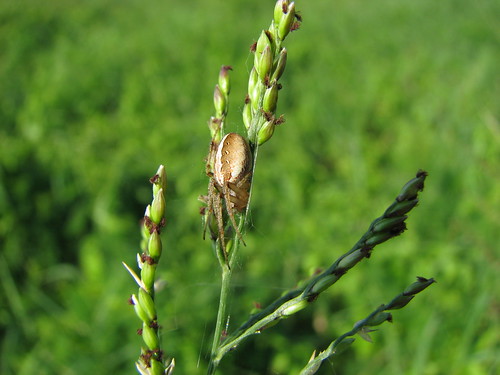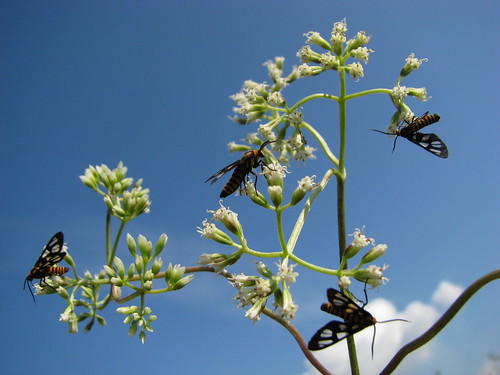
This is the flower of Love-in-the-mist (Passiflora foetida).

The Common Asystasia (Asystasia gangetica) has a purple 'tongue' that acts like a landing pad, helping to guide insect pollinators to it.

Introduced from South America, the Touch-me-not plant (Mimosa pudica) has sensitive leaves that will close quickly when touched upon.

My first time seeing this other species of mimosa which has white flowers (Mimosa bimucronata).

Here is another similar plant with sensitive leaves, Neptunia sp.

The common snakeweed (Stachytarpheta indica) is so named due to the spikes which bear their purple inflorescence.

Here was a spider motionless on the swaying grass, perhaps waiting for a prey to ambush on.

As I crossed by the Mile-a-minute (Mikania micranha) plant, there were lots of Amata huebneri moths sucking nectar from its inflorescence. Truely, this grassland is just full of beauty and life.
















